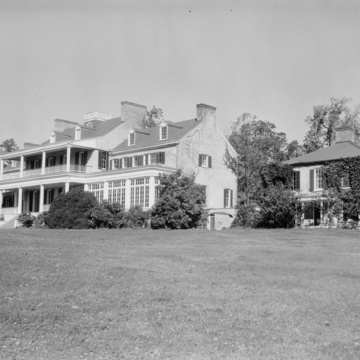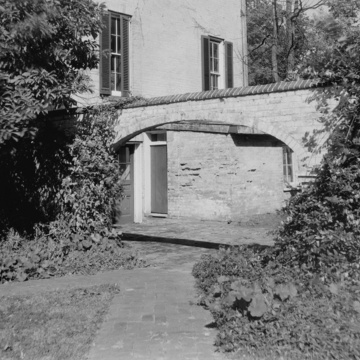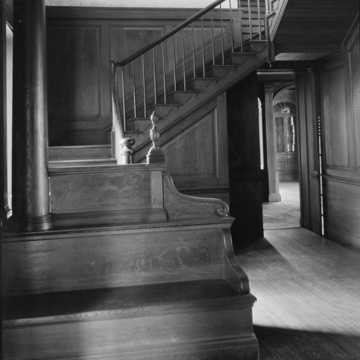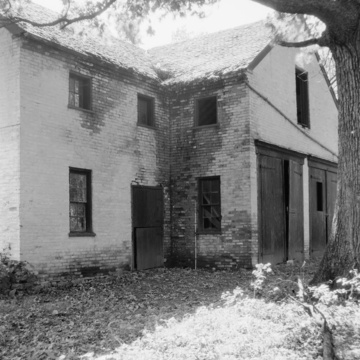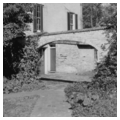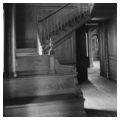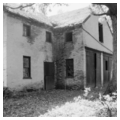Bushrod Corbin Washington, brother of John Augustine Washington II of Blakeley, built Claymont Court in 1820. In 1838, when he was in Richmond representing Jefferson County in the General Assembly, the house caught fire and was “reduced to ashes.” In reporting the conflagration in a letter, Henry Bedinger, who
Thus at one dash has been destroyed the Mansion house which but a few years since cost more than thirty thousand dollars, besides some of the furniture. I am sincerely sorry for this loss, he is an innocent good man, and I deplore his weakness and folly in erecting such an expensive building, because a house half or one quarter of the cost would have created as much if not greater real comfort—but pride & ambition too often leads [ sic] to great follies.
Bedinger's opinion notwithstanding, Washington immediately rebuilt the house, presumably along the original lines but perhaps on even larger ones. Claymont Court was and is by far the most imposing of Jefferson County's Washington houses.
The central part of the three-section main block has a transverse hall with two large rooms behind it. For the sake of symmetry, this arrangement dictated a three-bay north facade (with the entrance occupying the central bay) and a four-bay south facade. A small Doric portico centers the north facade, while a two-tiered porch extends across the south. Three-bay side wings, originally narrow and only one story tall but now almost as deep as the central block, and two and one-half stories tall, extend to either side. All the roofs in this central portion of the house are gabled and have dormer windows. Walls extending east and west from both wings form two sides of open courtyards. Two square, two-story, hip-roofed dependencies that enclose the far sides of the courts are large enough to be separate houses. If the open courtyard walls can be counted as hyphens, the mansion can be considered a seven-part composition.
Soon after the Civil War, the house became the Claymont Boarding School, and a lithograph made then shows the north facade before the side wings were elevated to their present height. In 1899 novelist Frank Stockton bought the house, and three years later William Rotch Ware featured it in The Georgian Period. According to Ware, “Mr. Wm. A. Bates, a New York architect, visited Claymont Court not long ago and repaired the interior without marring its original design.” Plans accompanying the text show that the wings had been altered to their present configurations by this time. In 1943, Raymond J. Funkhouser purchased the property, made further alterations, and made it his home. The Claymont School for Continuous Education, a sectarian group, occupied the property in the late 20th century. Even with its changes, Claymont Court would seem familiar to Bushrod Washington and probably to his moralizing opponent. Unfortunately, neither would recognize the view. In May 2001, the Jefferson County Planning Commission approved the master plan for Hunt Field, a development that will eventually contain 3,200 houses, all sprawling over the Washingtons' ancestral acres.














